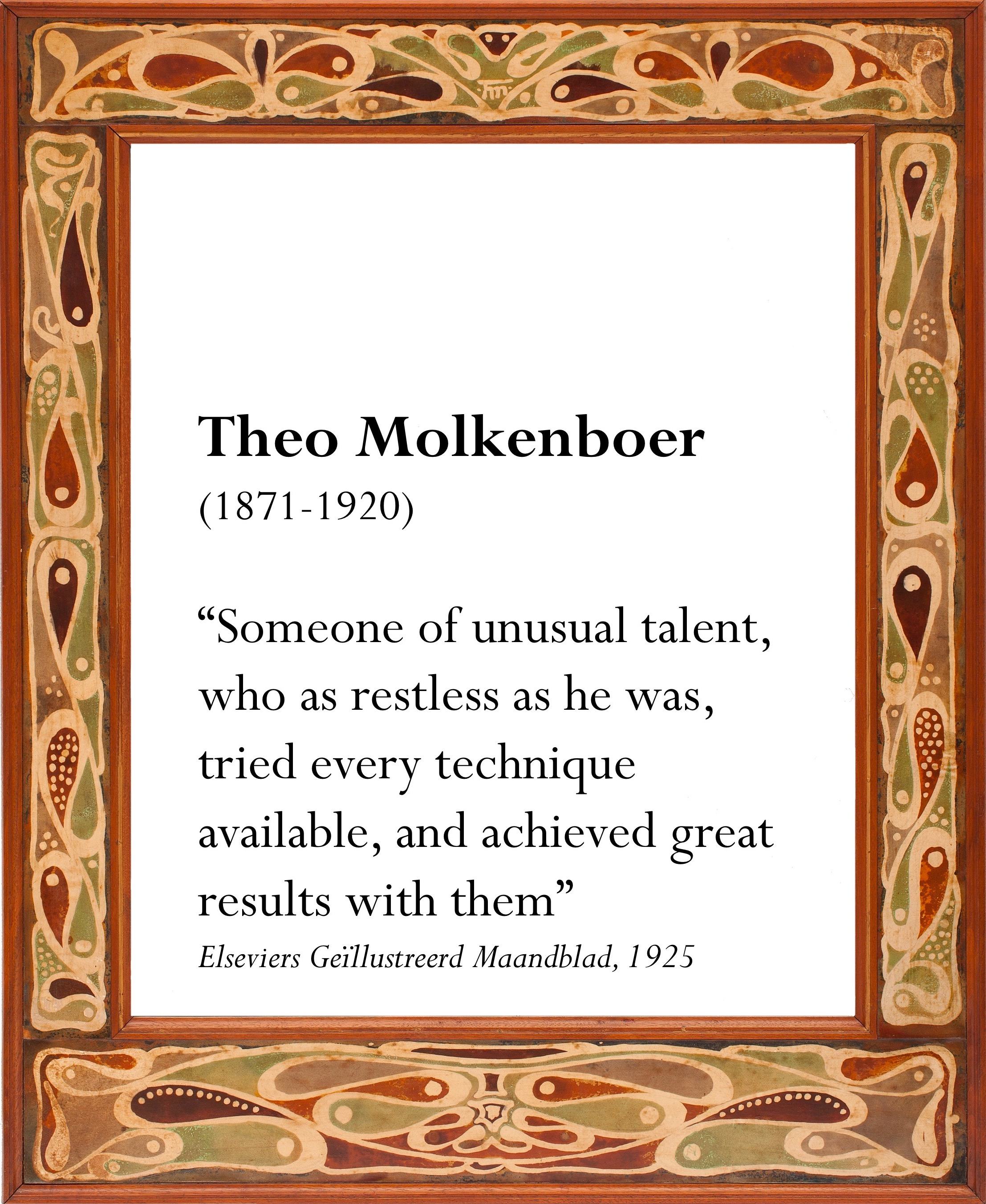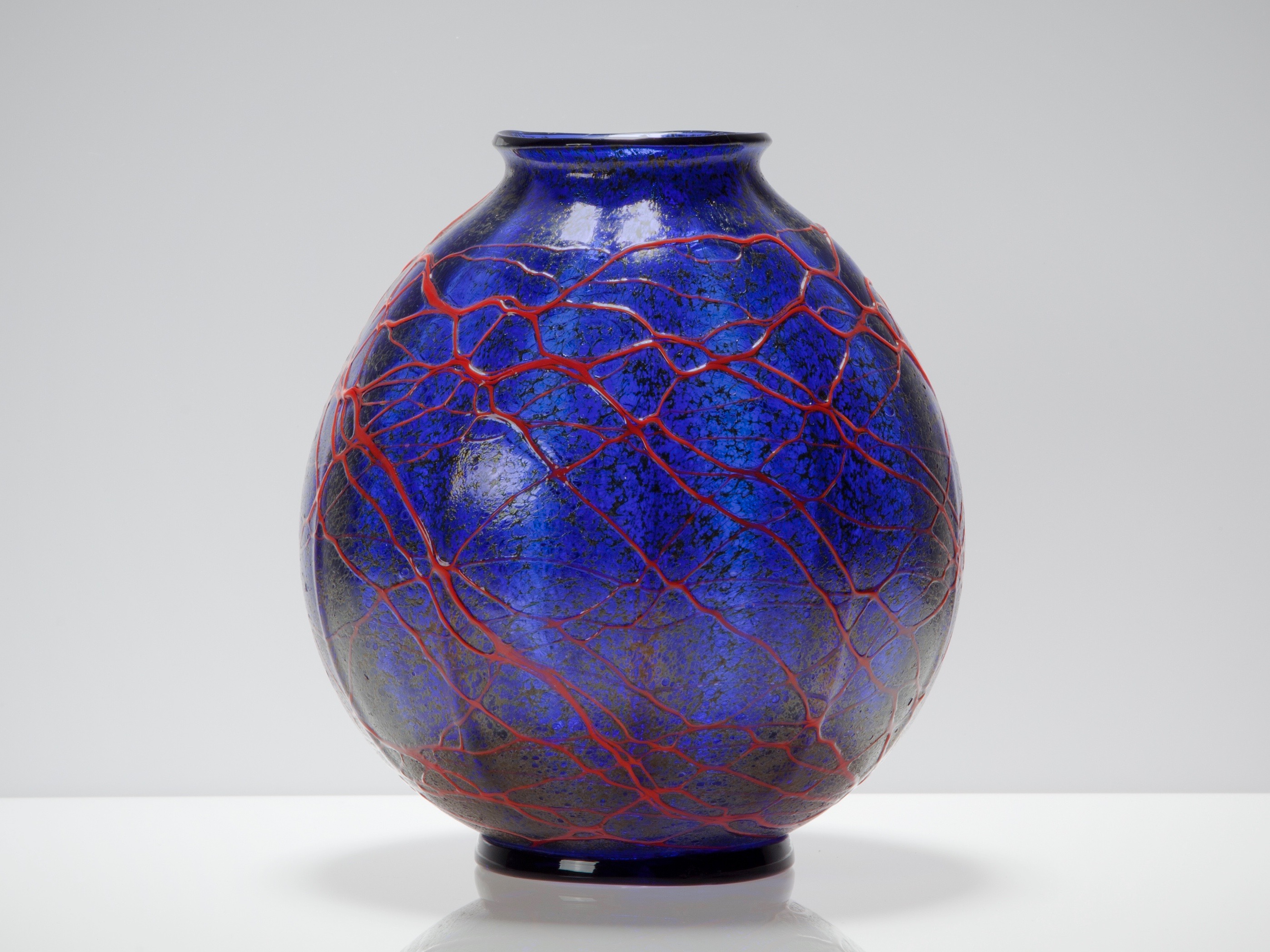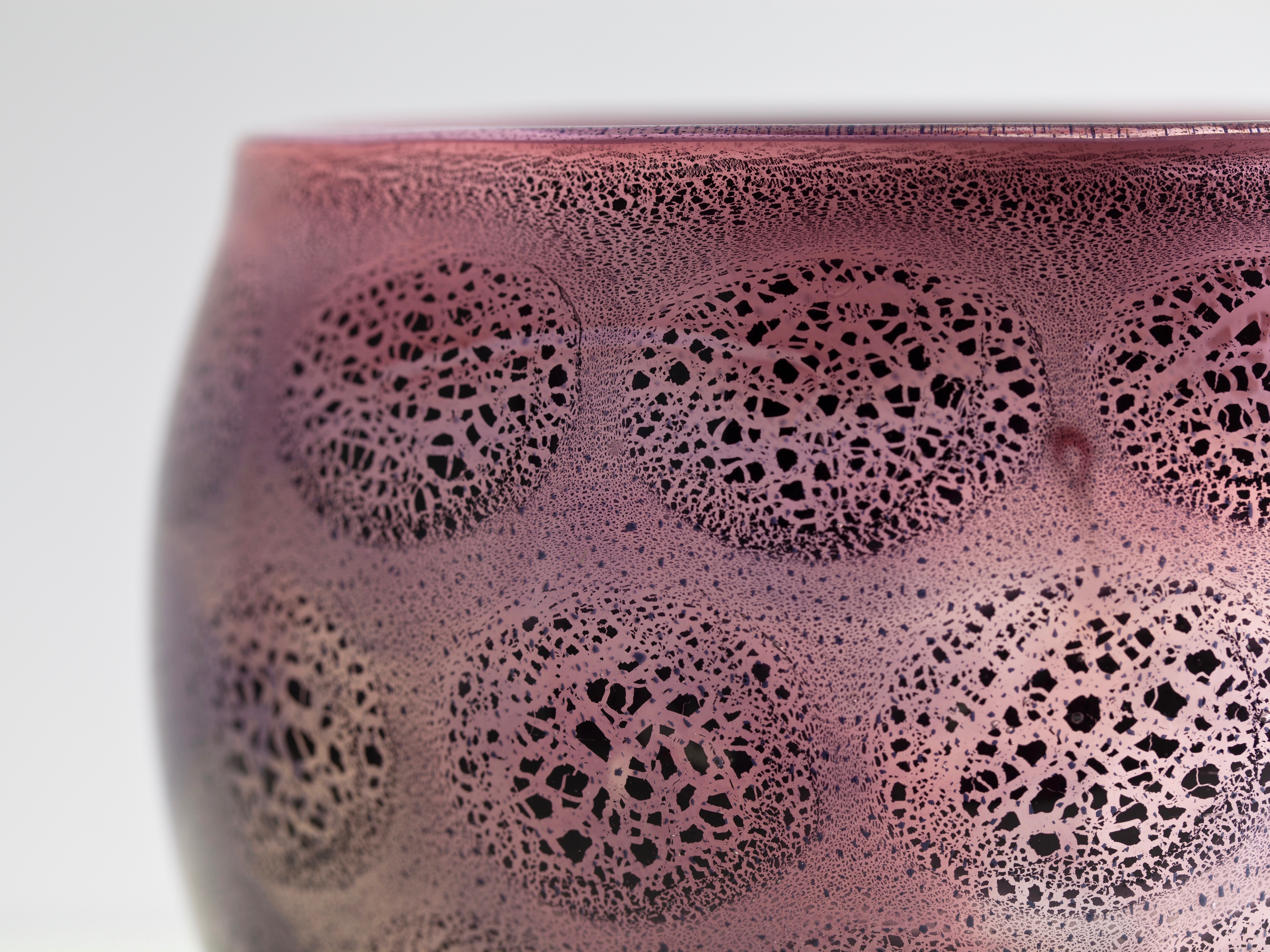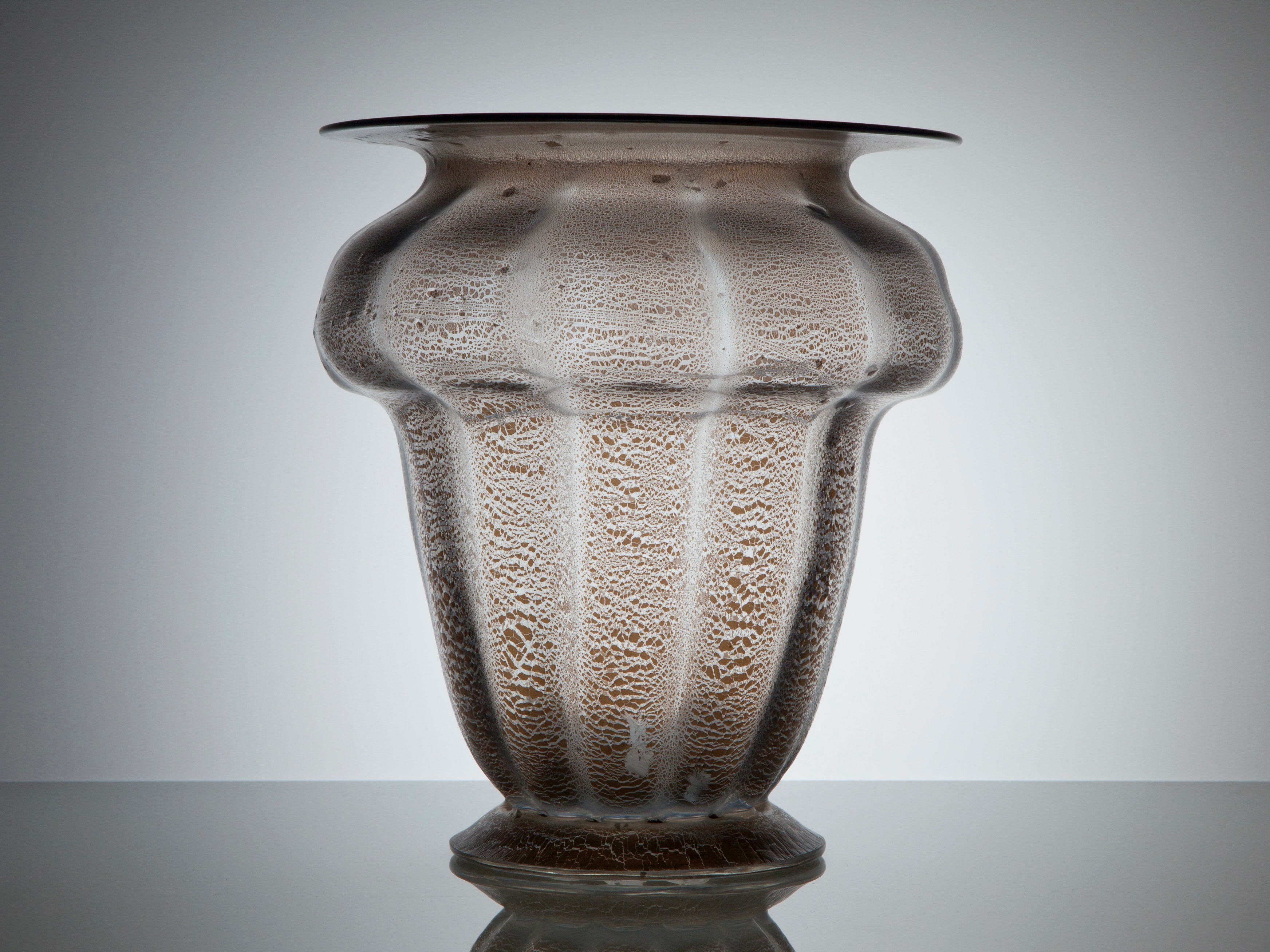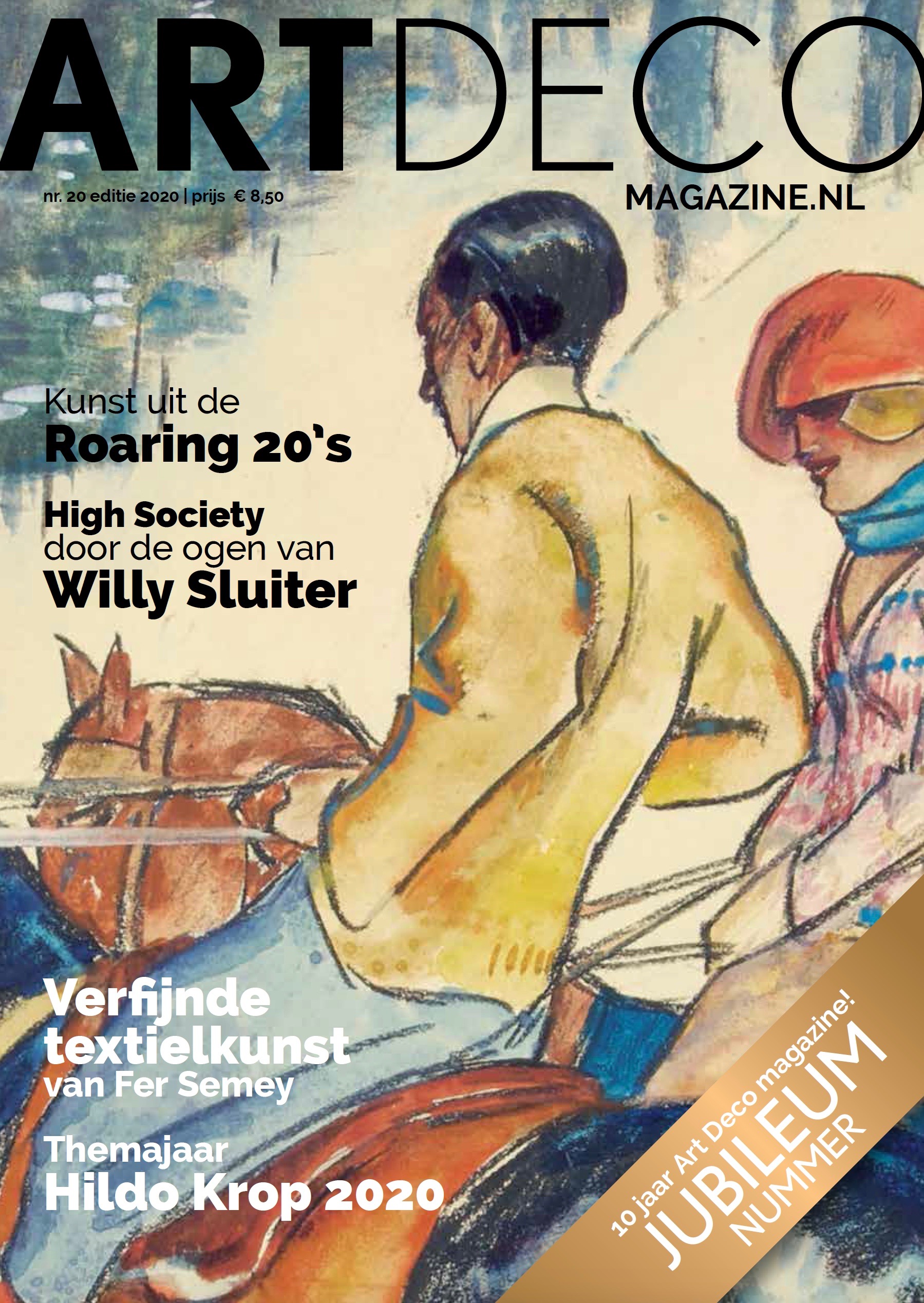Dutch Art Nouveau by Theo Molkenboer: Power in Simplicity
This rare batik mirror frame by Theo Molkenboer was one of the highlights of the exhibition New Art 1900 in Gemeentemuseum Den Haag in the 1960s. It was one of the few times that this mirror was available to the public eye; during the last century, it belonged to two important private art collections.
Vanguard of the Dutch Art Nouveau
“Someone of unusual talent, who as restless as he was, tried every technique available, subsequently achieving great results with them”. This is how Theo Molkenboer was described in 1925 in Elseviers Geïllustreerd Maandblad (Elsevier's Illustrated Monthly). Molkenboer (1871–1920) grew up in an artistic environment. After completing his studies, he began working as an independent artist, illustrator, and designer. He then became a part of the vanguard of the Dutch Art Nouveau.
Techniques from the Far East
The mirror frame, with a base of walnut wood, was made by Molkenboer in 1899. The singular design and organic decoration are significant for the Nieuwe Kunst, the Dutch version of the Art Nouveau. Typical is also the decorative technique adopted: batik on parchment. At the end of the 19thcentury, there was growing interest in ornaments and techniques hailing from the Far East and especially Indonesia in the Netherlands. Artists experimented with the traditional technique of batik, in which a wax-covered piece of fabric is submerged in different dye baths. By covering a different part of the fabric with wax during each colour of dye, a colourful decor appears. Molkenboer had probably already learned how to batik on parchment during or immediately following his studies.
Decoration follows Function
The batik mirror frame is a good example of the changes known to have taken place at the end of the 19thcentury in the world of Applied Arts. In England, William Morris propagated simplicity and austerity as a reaction to — according to him — the fruitless path of following historical design. Decorations should be the result of the function of the object — an idea that was embraced in the Netherlands by many artists. Also, Molkenboer endorsed Morris’s vision. Thus, he pleaded to base the decoration of a book on the construction of its cover in an article in 1896. Designers who decorated books and other utility objected profusely, without taking into account their structure, committed, according to Molkenboer, “an error against architecture”. “For is it not the highest art to comply with the needs and laws that the object poses us?” Molkenboer often adopted another idea from the Dutch Art Nouveau in his work, namely that nature is the mother (meaning: the inspiration) of all arts. The simple, powerful designs of Theo Molkenboer were exceedingly modern at the time.
Portrait of William Howard Taft
After 1900, Molkenboer began to concern himself with different forms of Applied Arts: he became the artistic leader of the Plateelfabriek Holland (Earthenware factory Holland) in Utrecht and received much appreciation as a poster designer. In 1909, he followed his brother to the United States, where both were commissioned with plenty of work. In this way, Molkenboer painted a portrait of President William Howard Taft, amongst others. In 1913, he returned to the Netherlands. At the age of 49, in 1920, Theo Molkenboer died from tuberculosis in a sanatorium in the Swiss Agra. Nowadays, he is remembered as one of the most innovative Dutch artists to have lived during the fin de siècle.
See our collection page for more sales information on the mirror frame by Molkenboer and other Art nouveau objects. Two Art Nouveau objects from the Kunstconsult collection, the Javanese court dancers of C. Wirtz and the Kneeling Javanese boy of August Falise, are on show at the Art Nouveau in the Netherlands exhibition in the Gemeentemuseum Den Haag.
Art Nouveau in the Netherlands, Gemeentemuseum Den Haag, 21 April to 28 October 2018.?
This is a short version of an article by Sipke van de Peppel, which previously appeared in Art Deco Magazine. Photo: Dennis A-Tjak
© Kunstconsult – 20th century art | objects
Reproduction and distribution of this text is only allowed with correct reference.

